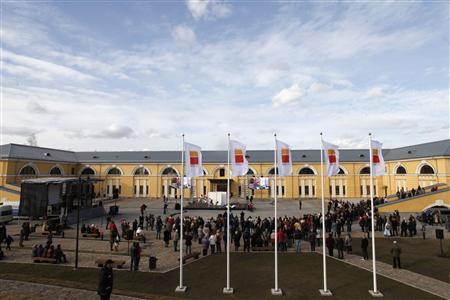"It's a wonderful homecoming for my father," the late artist's son, Christopher Rothko, told AFP at the opening in Daugavpils, Latvia's second largest city.
"But it's also very exciting that this is a living art centre that will promote new art from the region."
Mark Rothko was born Marcus Rothkovitz in 1903 in the southern city -- then known as Dvinsk and in the Russian empire -- but his family fled a decade later fearing rising anti-Jewish sentiment.
"He is so much identified as an American artist, and his American experience was very important as well, but his roots were here and I'm sure it had a major part in his formation," his 48-year-old son said.
Daughter Kate Rothko Prizel, 62, meanwhile recalled how the painter "would sit down with me with a map and point out where he was from and why you could no longer see Dvinsk on a map."
Rothko, who died in 1970, became a giant of the modern art world through his characteristic style -- a seemingly simple, but arresting juxtaposition of blocks of colour.
Last year, a large-scale painting of his fetched $86.9 million (66.8 million euros) at a New York auction, setting a record for any contemporary work of art.
That canvas -- "Orange, Red, Yellow" from 1961 -- bears some resemblance to one of the six original works that make up the centrepiece of the museum collection, all owned by the Rothko family.
The powerful "Untitled No 7 (Orange and Chocolate)" from 1957 features Rothko's characteristic fields of intense colour and inspired the museum's logo.
The Mark Rothko Art Centre, which also contains lecture rooms and spaces for artists to work on their craft and to exhibit, is housed in part of a giant Tsarist-era fort complex that was renovated at a cost of around four million euros, mostly funded by the European Union.
The European Commission's Latvian representative, Inna Steinbuka, said the centre "could drive not only tourism but also investment into the region and inspire the improvement of infrastructure."

No comments:
Post a Comment